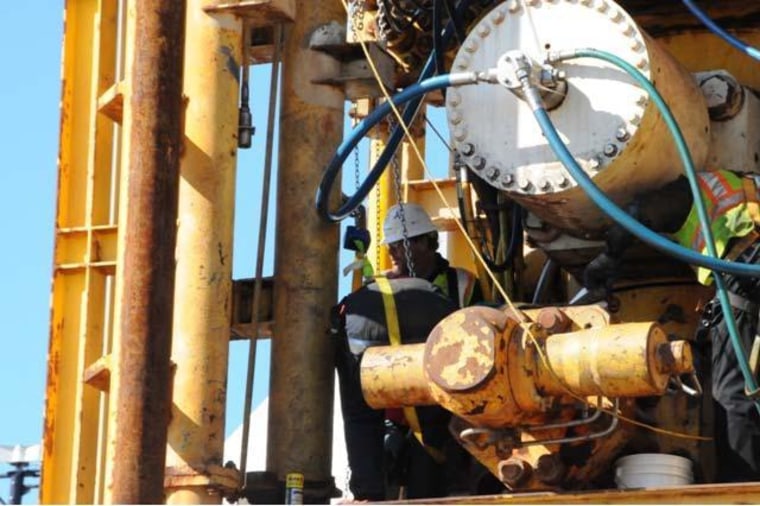The Obama administration is under pressure to investigate whether employees of two companies tied to the failed blowout preventer in the BP oil disaster compromised the investigation by getting "hands-on" access to the device.
Rep. Ed Markey, who heads a House subcommittee probing the disaster, fired off a letter urging the Obama administration to take action after the U.S. Chemical Safety Board complained of what it called "manipulation."
"If we are to hold the companies legally responsible for this accident, we can't afford any black mark on the investigation involving the 'black box' of this underwater disaster," wrote Markey, D-Mass.
In a letter to the federal agency overseeing the investigation, Safety Board chairman Rafael Moure-Eraso wrote that workers for Cameron International, which made the blowout preventer, and rig owner Transocean were allowed "hands-on manipulation" during federal tests to determine why the massive device failed.
"That approach diminishes the credibility of the entire process and jeopardizes the public's trust in the examination results," he added. "Given the well-publicized history of improper relationships between the former Minerals Management Service and members of the oil industry, one would have expected that extraordinary care would be taken to conduct the BOP testing above reproach."
The board noted that the companies at times had closer access to the equipment than the safety board itself.The board is one of several agencies looking into the disaster. It asked the Bureau of Ocean Energy Management, Regulation and Enforcement to limit access. That bureau was created earlier this year from the remnants of MMS.
The Houston Chronicle on Tuesday revealed that one of the Transocean employees with access was actually hired as a consultant by Det Norske Veritas, the company running the tests.
That appeared to violate a conflict-of-interest provision in the government's contract with Det Norske Veritas, bureau adviser Michael Farber acknowledged in a letter to the Chemical Safety Board.
Markey also posted the Safety Board letter and photos of the test area showing the Transocean employee manipulating a blowout preventer pipe and working on other equipment over at least two weeks.
The Houston Chronicle said Det Norske Veritas has since been instructed to terminate its consulting contract with the Transocean employee.
The Chemical Safety Board said it wants Det Norske Veritas terminated or at least supervised by a neutral third-party.
The safety board investigates serious chemical accidents and makes recommendations. It had previously agreed to the current test protocols and has complained that it hasn't been allowed to be more involved.
Transocean said in an e-mail to The Associated Press that the safety board's "accusations are totally unfounded." A spokesman for Det Norske Veritas, Blaine Collins, said in an e-mail to AP that he could not comment, referring questions to the ocean management agency.
Blowout preventers sit at the wellhead of exploratory wells and are supposed to lock in place to prevent a spill in the case of an explosion. They can snuff a blowout by squeezing rubber seals tightly around the pipes with up to 1 million pounds of force. If the seals fail, the blowout preventer deploys a last line of defense: a set of rams that can slice right through the pipes and cap the blowout.
Following the April 20 rig explosion in the Gulf of Mexico, the blowout preventer used with BP's well did not stop the flow of oil to the sea. Eleven workers were killed in the blast, and millions of gallons of oil spewed from BP's undersea well before it was capped.
The device was raised from the seafloor on Sept. 4.
After the device was taken to shore, it sat at the New Orleans facility for two months while officials from many interested companies and agencies debated about the proper protocols for analyzing it and who would get to watch.
